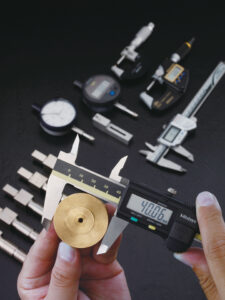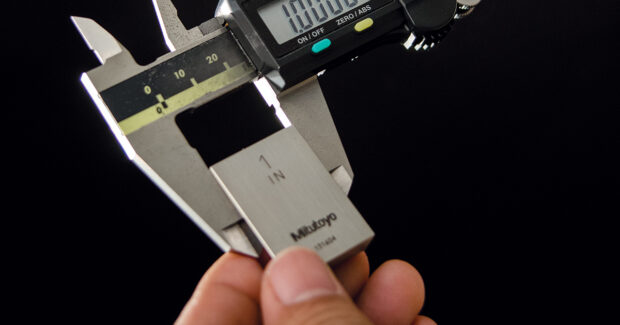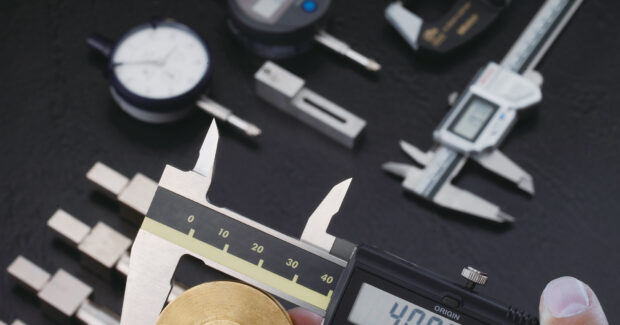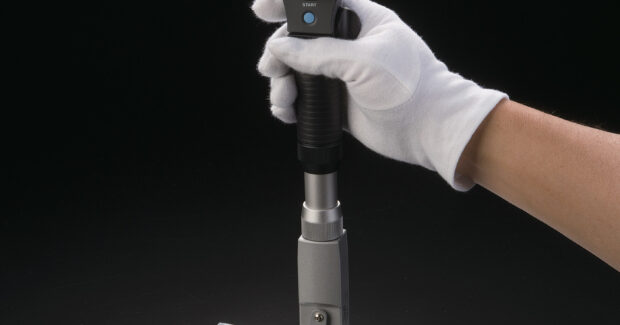Advancements and Calibration of Digital Gauges for Precision Metalworking
Metalworking shops can ensure consistent quality and reduce errors by embracing innovative gauging solutions and adhering to best practices.
Posted: August 28, 2024

The metalworking industry’s evolution is driven by the ongoing need for greater precision, efficiency and adaptability. One of the pivotal advancements fueling this evolution is the development of advanced digital gauges for measurement. These have become indispensable for ensuring accuracy and reliability in metalworking processes.
Latest Technological Advancements in Digital Gauges
Recent years have seen significant advancements in digital gauges and instrumentation, encompassing three primary areas: the accuracy and repeatability of linear scales, improvements in Ingress Protection (IP) ratings and enhanced communication capabilities.
- Linear Scale Improvements: At the heart of digital gauges lie linear scales, which execute precision measurements. Innovations in linear scale technology have dramatically improved their accuracy and repeatability. This enhancement is crucial for industries like semiconductor manufacturing, where high resolution and precision are paramount, and for mass production environments that demand speed without sacrificing accuracy.
- IP Ratings: The durability of digital gauges has been bolstered by advancements in IP ratings, measuring protection against dust and coolant infiltration. Improved IP ratings mean that gauges can now operate reliably in harsher environments, extending their longevity and reducing the risk of failure.
- Enhanced Communication: Modern digital gauges are designed with advanced communication capabilities, enabling them to interface seamlessly with various data reporting devices, including computers, PLCs and Smart Factory systems employing software that facilitates data retention, SPC and integration with other manufacturing systems. This connectivity facilitates real-time process control, feedback, and integration into digital twin environments, where data from gauges can be used for comprehensive process management and optimization.
The Crucial Role of Regular Calibration
Calibration is vital for maintaining the precision and reliability of metalworking instrumentation. Regular calibration ensures gauges provide accurate readings, which is essential for producing high-quality parts. Neglecting calibration can lead to significant issues, including the production of defective parts and increased scrap rates, which subtracts from your bottom line. Calibration involves verifying that a gauge measures accurately against a known standard and then making necessary adjustments if discrepancies are found.
Modern digital gauges, designed with robust and durable materials, often require less frequent adjustments due to their ability to withstand environmental stresses. However, consistent calibration checks remain essential to ensure ongoing accuracy. Advanced gauges also feature absolute scales, which eliminate the need for zeroing, thus streamlining the measurement process.
Addressing Challenges in Measuring Complex Geometries
Metalworking often involves the measurement and inspection of complex geometries which pose significant challenges. Traditional methods relied heavily on breaking down complex parts into simpler, one-dimensional measurements using hand tools. While effective, this approach can be time-consuming and prone to errors.
Innovative gauging solutions, such as coordinate measuring machines (CMMs), have revolutionized the inspection of complex geometries. Modern CMMs incorporate advanced linear scales that offer higher resolution and greater accuracy, allowing them to operate effectively even in shop floor environments. These machines can communicate measurement data directly to PLCs and Smart Factory networks, enabling real-time process adjustments and enhancing overall efficiency.
Specialized Gauges for Optimal Fabrication Results

To achieve optimal results, specialized gauges are employed for measuring complex geometries. These include digital height gauges, bore gauges and form measuring systems. Digital height gauges, for example, provide precise vertical measurements and are essential for parts with critical height specifications. Bore gauges are used for measuring the internal dimensions of cylindrical objects, ensuring that internal diameters meet specified tolerances. Form systems assess the shape and contour of parts, crucial for components with intricate surface and shape profiles.
These specialized tools, combined with advanced digital capabilities, ensure that complex parts are measured accurately and efficiently, reducing the risk of defects, and enhancing overall product quality.
Transformation of Traditional Metalworking Practices
The integration of digital gauges has significantly transformed traditional metalworking practices. Key benefits for the industry include reduced operator error, improved measurement accuracy and enhanced data management. Digital gauges eliminate the need for manual data entry, reducing the risk of human error and bias. They also provide immediate feedback on measurement results, allowing for quicker decision-making and process adjustments.
Digital gauges also improve quality control by enabling detailed statistical process control. By continuously monitoring measurement data, metalworking shops can predict defects and implement corrective actions before bad parts are produced. This proactive approach reduces scrap rates and increases production efficiency.
Best Practices for Maintaining and Calibrating Digital Gauges
To ensure longevity and accuracy of digital gauges, metalworking shops should adhere to best practices for maintenance and calibration:
- Regular Calibration: Implement a consistent schedule to verify the accuracy of gauges against known standards. Keep the gauges clean and store them in environments that protect against dust, coolant and other contaminants.
- Sourcing High-quality Gauges: Invest in high-quality gauges designed for the specific demands of the environment. Outdated or inferior tools may compromise measurement accuracy, turning short-term procurement cost savings into long-term damage to the bottom line.
- Integration with Data Systems: Ensure that gauges are equipped with the necessary communication interfaces to integrate with data management and process control systems, reducing reliance on manual data entry.
Future Trends and Innovations
Near-term innovations in digital gauges and instrumentation almost certainly will include the integration of artificial intelligence (AI) for defect detection, further enhancements in communication technologies, and the development of even more robust and accurate measurement tools.
By embracing innovative gauging solutions and adhering to best practices, metalworking shops can ensure consistent quality, reduce errors, and enhance their overall production capabilities.
















